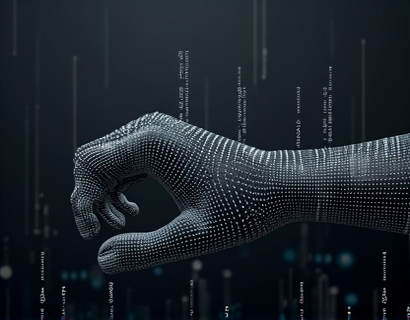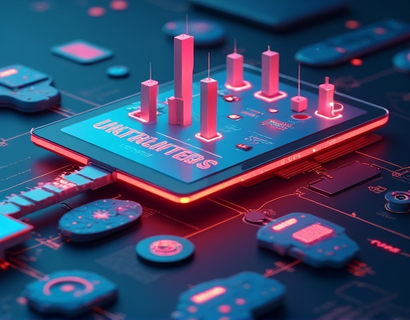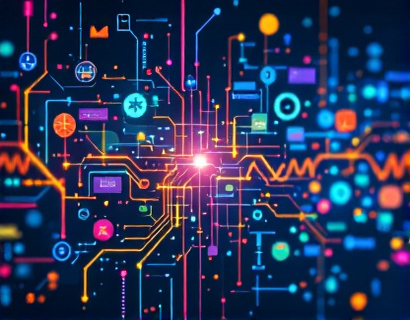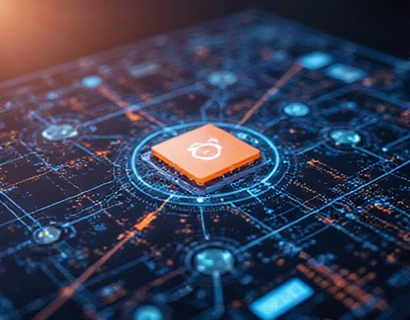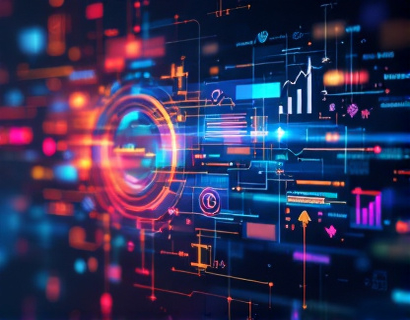Elevating App Ecosystem Experiences: The Synergy of Crypto and AI
The integration of cryptocurrency and artificial intelligence (AI) is revolutionizing the digital landscape, creating a new paradigm for app ecosystems. This synergy is not just about combining two advanced technologies but about harnessing their collective power to deliver unprecedented user experiences and drive innovation. As tech professionals and early adopters, understanding this convergence is crucial for leveraging these tools to enhance digital interactions and ensure future growth.
The app ecosystem, once primarily driven by traditional software development, is now at the forefront of a technological revolution. Cryptocurrency, with its decentralized and secure nature, provides a robust foundation for transactions and data management. AI, on the other hand, brings intelligent automation and personalized experiences to the table. When these two forces merge, the potential for transformative applications is immense.
Decentralized Applications and Smart Contracts
One of the most significant impacts of combining crypto and AI is the development of decentralized applications (dApps) powered by smart contracts. These applications run on blockchain networks, ensuring transparency, security, and autonomy. Smart contracts, self-executing contracts with the terms directly written into code, automate processes and reduce the need for intermediaries. AI enhances these processes by analyzing data, predicting outcomes, and optimizing performance.
For instance, in the finance sector, dApps can facilitate peer-to-peer lending and borrowing with AI-driven credit scoring and risk assessment. This not only speeds up the process but also makes it more accurate and fair. The decentralized nature ensures that transactions are secure and tamper-proof, while AI ensures that the system adapts to new data and patterns in real-time.
Enhanced User Authentication and Security
Security is a paramount concern in the digital world, and the combination of crypto and AI offers robust solutions. Traditional authentication methods are often vulnerable to breaches and fraud. By leveraging blockchain and AI, new authentication mechanisms can be created that are both secure and user-friendly.
Biometric authentication, powered by AI, can be integrated with blockchain to create secure and seamless login processes. For example, facial recognition or fingerprint scanning can be used to verify a user's identity, with the data stored on a blockchain to ensure it cannot be altered or stolen. AI algorithms can continuously monitor for anomalies and potential threats, enhancing the overall security of the app ecosystem.
Personalized User Experiences
AI's strength lies in its ability to analyze vast amounts of data and provide personalized experiences. When combined with the transparency and user control offered by cryptocurrency, the potential for tailored digital interactions is vast. User data can be managed and shared in a secure and consent-based manner, allowing apps to offer highly customized services without compromising privacy.
For example, a streaming service can use AI to analyze a user's viewing habits and preferences, recommending content that aligns with their interests. Transactions for subscription renewals or content purchases can be handled through a blockchain-based system, ensuring secure and transparent billing. This not only enhances the user experience but also builds trust and loyalty.
Optimized Supply Chain and Logistics
Supply chain management is another area where the fusion of crypto and AI can drive significant improvements. Blockchain provides a transparent and immutable ledger for tracking goods from production to delivery, while AI can optimize every step of the process. Predictive analytics can forecast demand, optimize inventory levels, and identify potential bottlenecks.
Smart contracts can automate payments and ensure compliance with contractual obligations, reducing delays and disputes. For instance, in the pharmaceutical industry, blockchain can track the movement of drugs, ensuring authenticity and compliance with regulations. AI can monitor supply chain conditions in real-time, adjusting routes and methods to prevent spoilage and ensure timely delivery.
Innovative Monetization Models
The convergence of crypto and AI opens up new monetization models for app developers. Tokenization, the process of converting assets into tokens on a blockchain, allows for fractional ownership and new revenue streams. AI can optimize these models by analyzing market trends, user behavior, and economic indicators to determine the best token issuance and distribution strategies.
For example, a gaming platform can issue in-game tokens that represent virtual assets or privileges. AI can manage the economy of these tokens, ensuring balance and preventing inflation. Users can earn, trade, and spend these tokens within the ecosystem, creating a self-sustaining and engaging environment. This not only enhances user retention but also provides developers with a new revenue source.
Data Marketplaces and Privacy
Data is the new oil, and the ability to manage and monetize it effectively is crucial. Blockchain-based data marketplaces, powered by AI, can create a secure and transparent environment for data trading. Users can sell their data while maintaining control over how it is used, and developers can access high-quality data for training AI models.
AI algorithms can anonymize and aggregate data, ensuring privacy while still providing valuable insights. Smart contracts can automate data transactions, ensuring that users are compensated fairly and that data usage complies with regulations. This model not only empowers users but also fosters innovation by providing developers with the data they need to create advanced AI applications.
Challenges and Considerations
While the potential benefits are significant, the integration of crypto and AI also presents challenges. Regulatory uncertainty, technical complexity, and scalability issues are among the key hurdles. Developers and organizations must navigate these challenges carefully to ensure successful implementation.
Regulatory frameworks for blockchain and cryptocurrency are still evolving, and compliance is essential. AI systems require robust ethical guidelines to prevent bias and ensure fairness. Scalability remains a concern for blockchain networks, especially as the number of transactions increases. However, ongoing research and development are addressing these issues, paving the way for more widespread adoption.
Future Prospects
The future of the app ecosystem is bright with the continued advancement of crypto and AI. As these technologies mature, we can expect even more innovative applications and use cases. The seamless integration of decentralized systems, intelligent automation, and secure data management will redefine how we interact with digital services.
For tech professionals and early adopters, embracing this synergy is key to staying ahead. By understanding the potential and addressing the challenges, you can leverage these powerful tools to create transformative digital experiences. The convergence of crypto and AI is not just a trend but a fundamental shift in the way we build and interact with digital applications.




